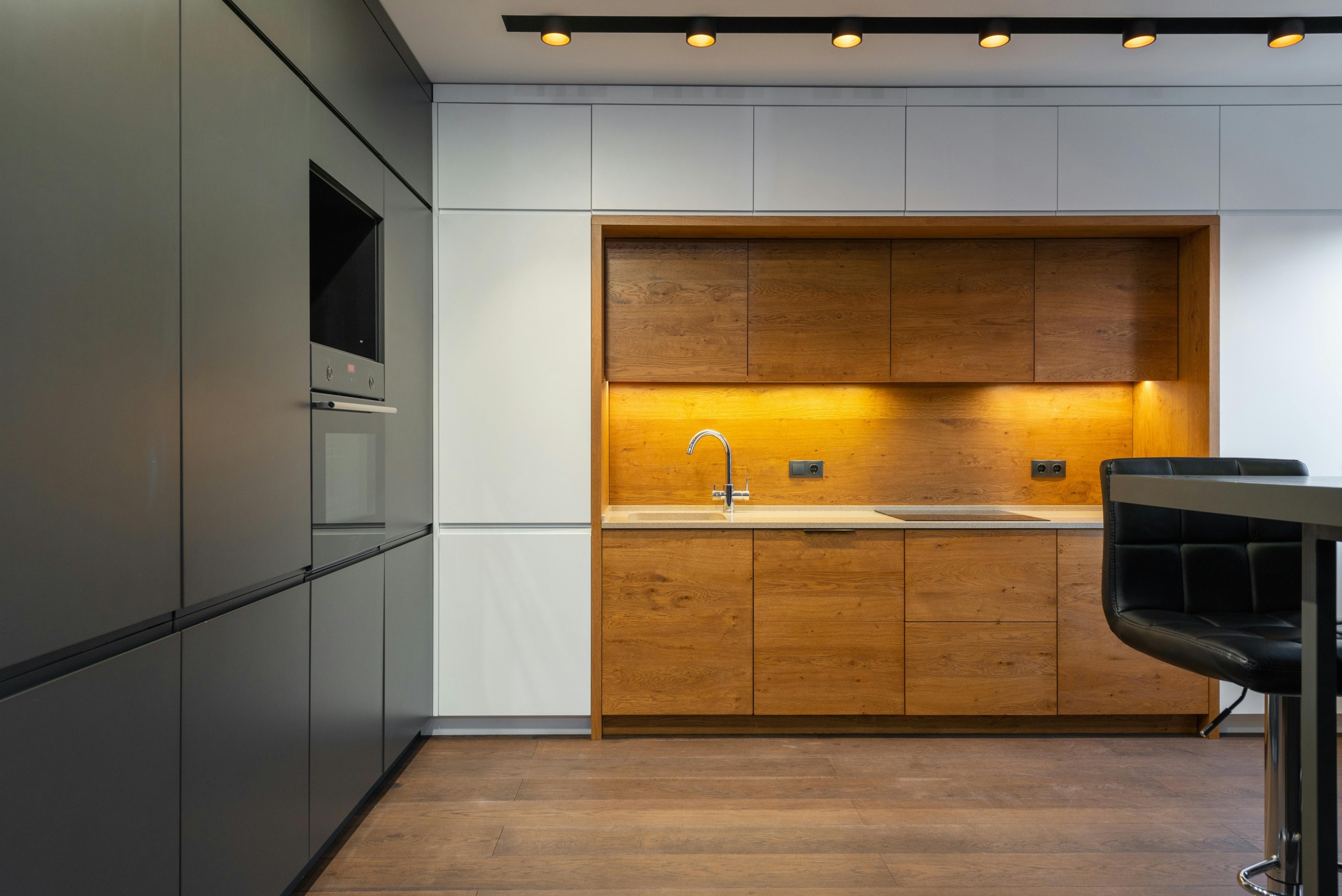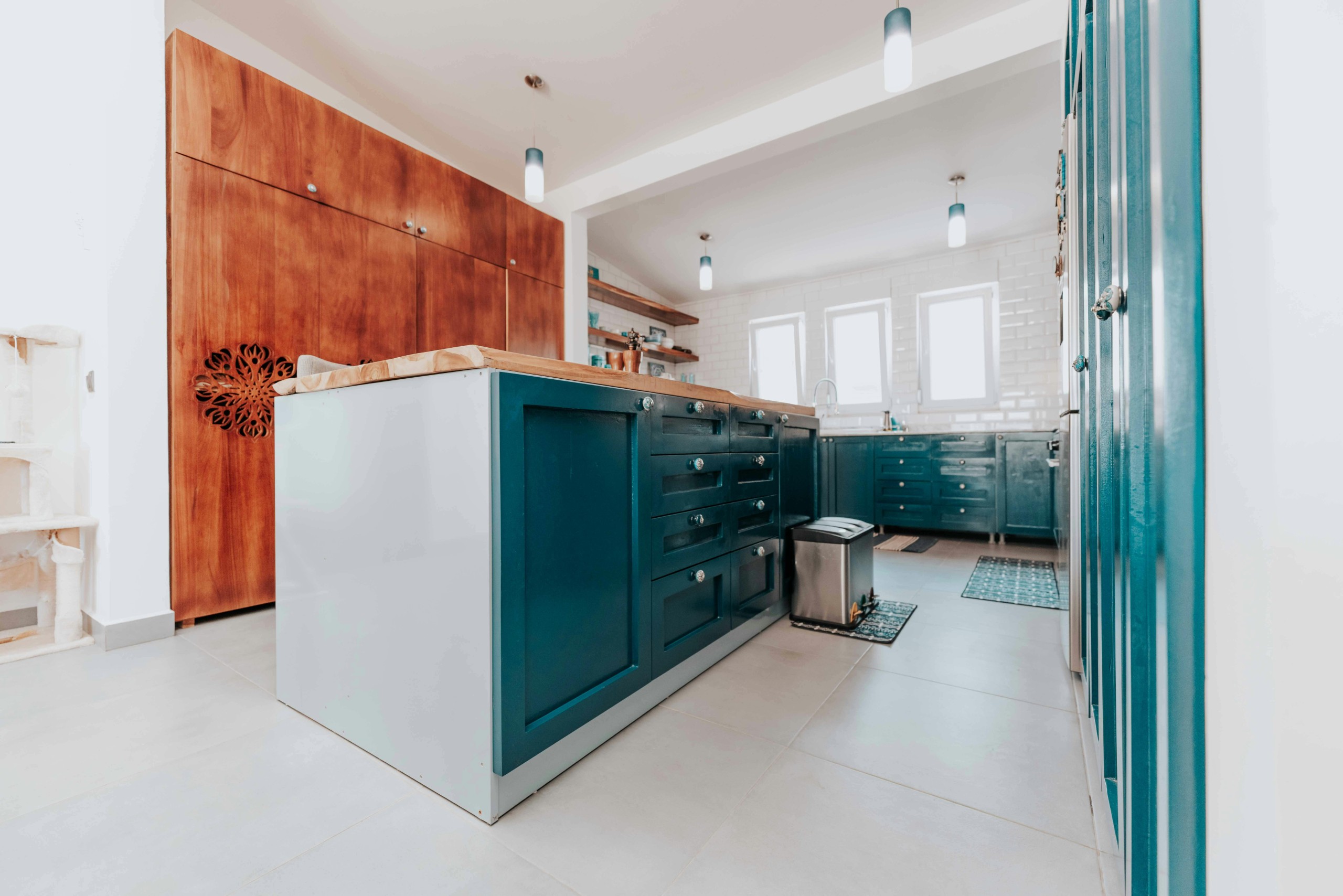Handleless Kitchen Design: Sleek, Modern, and Functional
Outline of the Article:
- Introduction
- Definition and appeal of handleless kitchen design
- Why handleless kitchens are growing in popularity
- Key Elements of Handleless Kitchen Design
- Clean lines and minimalist aesthetics
- Push-to-open and integrated handle mechanisms
- Flat-panel and slab-style cabinetry
- Types of Handleless Kitchen Systems
- True handleless systems
- J-pull systems
- Push-to-open systems
- Advantages of Handleless Kitchen Design
- Modern and streamlined appearance
- Easy to clean and maintain
- Improved safety and functionality
- Disadvantages and Challenges of Handleless Kitchens
- Potential for fingerprints and smudges
- Limited options for certain cabinet styles
- Higher installation costs
- Popular Layout Ideas for Handleless Kitchens
- Open-plan layouts
- Galley kitchens with handleless cabinetry
- U-shaped and L-shaped designs
- Best Materials and Finishes for Handleless Kitchens
- High-gloss vs matte finishes
- Wood veneer and textured finishes
- Stone and composite worktops
- Colour Palettes and Styling
- Neutral tones with bold accents
- Monochrome and two-tone designs
- Mixing warm and cool shades
- Lighting and Ambience in Handleless Kitchens
- Under-cabinet and plinth lighting
- Pendant lighting over islands
- Recessed ceiling lights for even illumination
- Smart Technology Integration
- Smart appliances and touchless taps
- Integrated LED lighting
- Voice-controlled kitchen systems
- Storage Solutions in Handleless Kitchens
- Soft-close drawers and hidden compartments
- Pull-out pantry and vertical storage
- Open shelving vs concealed storage
- Eco-Friendly and Sustainable Options
- Recycled materials for cabinets and worktops
- Energy-efficient appliances
- Low-VOC paints and finishes
- Costs and Budget Considerations
- Average costs for handleless kitchens
- Where to invest and where to save
- Long-term value considerations
- Common Mistakes to Avoid
- Over-reliance on glossy finishes
- Insufficient storage planning
- Poor lighting placement
- Conclusion
- Why handleless kitchens are a smart design choice
- Blending aesthetics with functionality
- FAQs
- Are handleless kitchens more expensive than traditional kitchens?
- What’s the best material for handleless kitchen cabinets?
- Are handleless kitchens practical for families?
- How do you prevent fingerprints on handleless cabinets?
- Do handleless kitchens go out of style?
Handleless Kitchen Design: Sleek, Modern, and Functional
Introduction
Handleless kitchens have become one of the most sought-after trends in modern kitchen design. Known for their sleek, streamlined appearance and minimalist charm, handleless kitchens create a clean, uninterrupted look that works beautifully in both contemporary and open-plan homes.
By removing traditional handles, these kitchens offer a seamless flow between cabinetry and surfaces, making the space feel bigger and more modern. Handleless kitchens are not only stylish but also highly practical, with clever push-to-open and soft-close mechanisms making daily use easy and comfortable.
Whether you’re renovating an existing space or designing a brand-new kitchen, a handleless layout is a fantastic way to create a modern, clutter-free environment that’s as functional as it is beautiful.
Key Elements of Handleless Kitchen Design
Handleless kitchens are defined by a few essential design features:
✔️ Flat-Panel Doors: Smooth, unadorned surfaces without traditional raised detailing.
✔️ Push-to-Open Mechanisms: Cabinets and drawers that open with a light push rather than a handle.
✔️ J-Pull Designs: A recessed groove at the top or side of a door or drawer for easy opening.
✔️ Continuous Rails: Hidden metal rails behind cabinet doors for a streamlined look.
✔️ Minimalist Colour Palettes: Neutral shades like white, grey, black, and beige dominate handleless designs.
The result is a clean, modern kitchen with a strong sense of symmetry and balance.
Types of Handleless Kitchen Systems
- True Handleless Systems
- Uses a continuous rail installed behind the cabinetry.
- Doors and drawers are opened by placing fingers behind the rail.
- Creates a completely smooth and flat look.
- J-Pull Systems
- A groove is built into the top or side of the cabinet door.
- No need for additional rails or push mechanisms.
- Commonly used in gloss or matte finish kitchens.
- Push-to-Open Systems
- A mechanical or magnetic catch opens the door or drawer when pressed.
- Provides a true flat-panel look without visible grooves or rails.
- Works well for upper and lower cabinetry.
Advantages of Handleless Kitchen Design
✅ Modern and Clean Look: Handleless kitchens create a smooth, modern appearance with fewer visual interruptions.
✅ Easy to Clean: No handles mean fewer nooks and crannies for dirt and grime to accumulate.
✅ Improved Safety: No handles sticking out reduces the risk of bumps and snags, especially in smaller kitchens.
✅ Enhanced Flow: Handleless kitchens work particularly well in open-plan designs, providing a seamless transition between kitchen, dining, and living areas.
Disadvantages and Challenges of Handleless Kitchens
Fingerprints and Smudges: Glossy surfaces are prone to visible marks.
Higher Cost: True handleless systems often require more precision in installation, increasing costs.
Limited Traditional Styling: Handleless kitchens suit modern styles but may not work in more traditional homes.
Popular Layout Ideas for Handleless Kitchens
- Open-Plan Layout
- Handleless cabinets create a smooth transition between the kitchen and living areas.
- Ideal for social spaces and family-friendly environments.
- Galley Kitchen
- Clean lines and flat panels make a galley kitchen feel larger.
- Use push-to-open systems for upper and lower cabinetry.
- L-Shaped and U-Shaped Kitchens
- J-pull or continuous rail designs work well in these layouts.
- Plenty of storage without compromising on aesthetics.
Best Materials and Finishes for Handleless Kitchens
| Material | Finish | Best For |
| High-Gloss Lacquer | Reflective and sleek | Small kitchens, adds light |
| Matte Finish | Soft, modern feel | Larger kitchens, contemporary style |
| Wood Veneer | Natural and textured | Warm, organic look |
| Laminate | Affordable and durable | Budget-friendly designs |
Colour Palettes and Styling
White and Grey: Classic, clean, and timeless.
Matte Black: Bold and dramatic for a luxury feel.
Earthy Greens and Browns: Bring warmth and balance to a modern design.
Two-Tone Designs: Dark lowers with light uppers for contrast.
Lighting and Ambience
Under-Cabinet Lighting: Adds warmth and improves functionality.
Recessed Ceiling Lights: Provides even illumination.
LED Strip Lights: Ideal for accenting plinths and open shelving.
Smart Technology Integration
Wi-Fi-Connected Ovens and Fridges – Control settings remotely.
Voice-Controlled Lighting – Integrate with Alexa or Google Assistant.
Touchless Faucets – For improved hygiene and convenience.
Conclusion
Handleless kitchens offer a perfect blend of modern style and practical functionality. By combining clean lines, minimalist finishes, and clever storage solutions, a handleless kitchen creates a space that’s not only visually appealing but also highly efficient. Whether you prefer a matte black finish or a high-gloss white look, a handleless kitchen brings a timeless elegance that enhances any modern home.
FAQs
- Are handleless kitchens more expensive?
Yes, due to specialised systems and precision installation. - What’s the best finish for handleless kitchens?
Matte and wood veneer finishes are popular for durability and style. - Do handleless kitchens suit small spaces?
Yes, they create a streamlined look that makes small kitchens feel larger.









